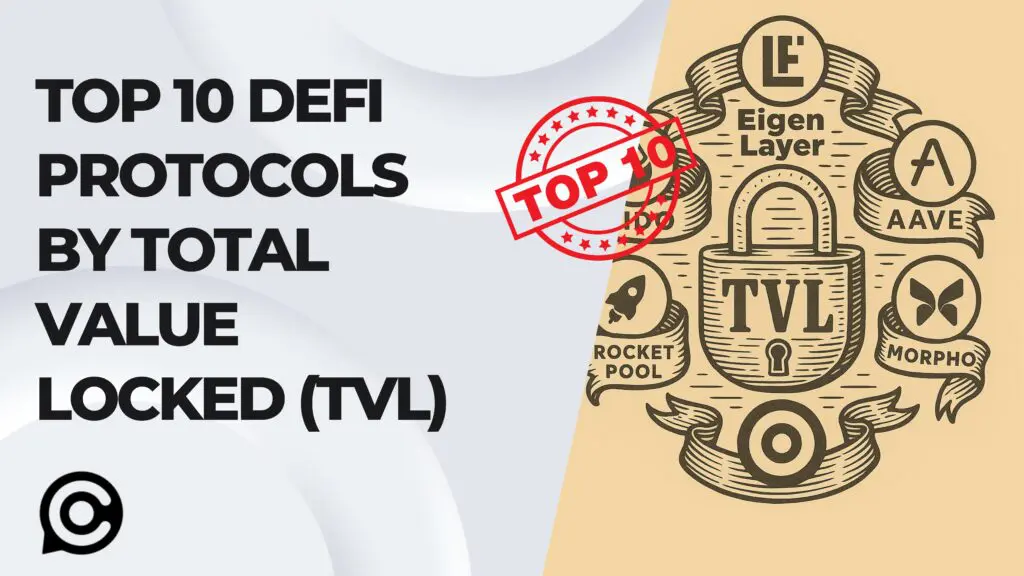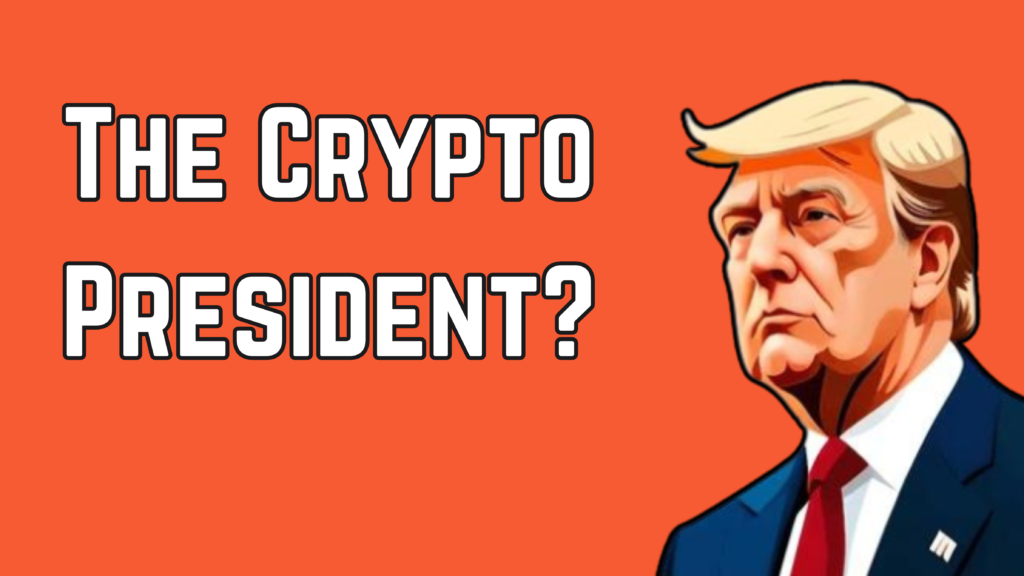Introduction
When people compare DeFi protocols by TVL, they’re really asking: “Where is the most crypto capital parked, and why?” Total Value Locked (TVL) has become one of the most cited metrics in decentralized finance because it reflects how much trust, liquidity, and user commitment a protocol has attracted. By looking at DeFi TVL rankings, investors, builders, and analysts can quickly spot which protocols dominate the landscape and which emerging projects are gaining momentum.
What is TVL?
Total Value Locked (TVL) is the total dollar value of crypto assets deposited in a DeFi protocol’s smart contracts—across lending pools, staking contracts, liquidity pools, and restaking modules. Because it multiplies on-chain balances by live market prices, TVL reflects both capital commitment and the liquidity depth available for users.
Why TVL Matters When Comparing DeFi Protocols
TVL is a quick gauge of adoption and trust. Higher TVL usually implies:
- Deeper liquidity (tighter spreads, less slippage, healthier borrowing caps)
- Greater stickiness (users are willing to park funds, not just trade)
- Ecosystem magnetism (integrations, builders, and institutions follow liquidity)
Still, it is not a perfect signal. Incentives can inflate TVL, and raw totals say little about decentralization, revenue quality, or security posture.
How to Calculate TVL for DeFi Protocols
- Identify locked assets. List every token held by the protocol’s contracts (e.g., ETH, USDC, stETH, LP tokens).
- Pull live prices. Use a reliable feed (on-chain oracles or reputable aggregators).
- Multiply & sum. Balance × price for each asset, then sum across all vaults/pools.
- Refresh continuously. Price moves and deposits/withdrawals change TVL minute-to-minute; dashboards (e.g., analytics sites) automate this process.
What is Bridged TVL?
Bridged TVL is the value escrowed in cross-chain bridges so assets can circulate on other networks. For a protocol, large shares of bridged assets can boost raw TVL without improving native liquidity quality, useful context when comparing DeFi protocols by TVL across multiple chains.
How we ranked DeFi protocols by TVL
- Data window: August 2025 snapshot (as provided), noting that figures move daily.
- Focus: Protocols, not L1/L2 chains.
- Depth: For each project you get: what it does, recent drivers, and risk notes.
Top DeFi Protocols by TVL (August 2025)
1) Lido, liquid staking at scale (≈ $36.1B)
What it does: Lido issues stETH for staked ETH, letting users keep liquidity while earning staking rewards. stETH is widely accepted as collateral across DeFi, turning stakers into active participants.
Why TVL is high:
- Frictionless staking UX and broad DeFi composability for stETH.
- Strong network effects: the more places stETH is used, the more deposits arrive.
Risks to watch:
- Peg/liquidity risks for stETH during market stress.
- Operator decentralization: concentration of node operators can be a concern.
- Governance tradeoffs around fee takes and staking distribution.
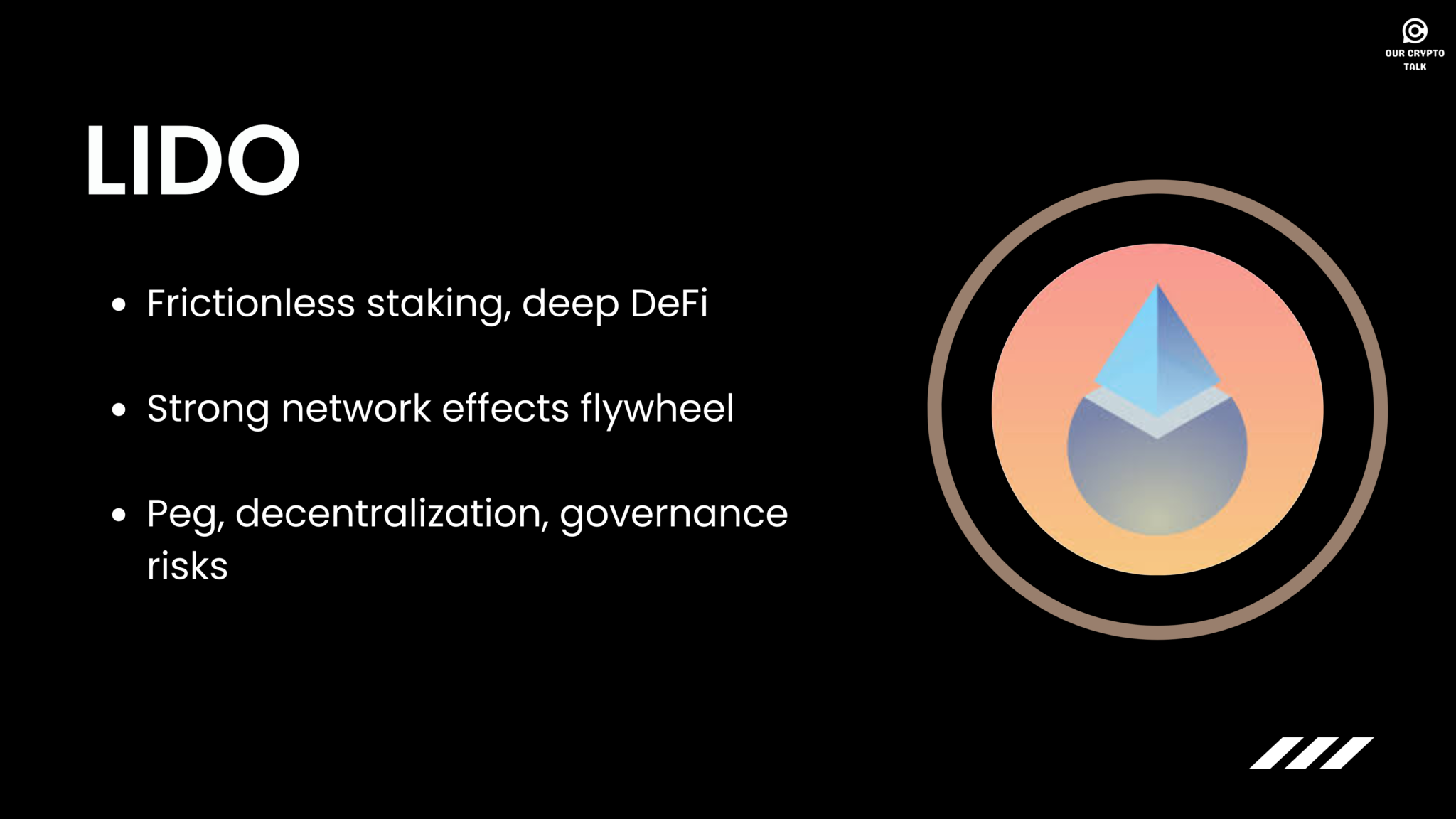
2) Aave, the lending powerhouse (≈ $34.7B)
What it does: Aave is a non-custodial money market. Users supply assets to earn yield; borrowers post over-collateralized loans at variable or stable rates. It runs across many networks with risk “isolation” for long-tail assets and E-mode (high efficiency) for correlated collateral.
Why TVL is high:
- Broad asset coverage and multi-chain deployments draw sticky liquidity.
- Institutional pilots plus integrations (e.g., wallets, treasuries) funnel deposits.
- Product moat: flash loans, granular risk parameters, and deep liquidity buckets.
Risks to watch: Interest-rate volatility and oracle dependencies; long-tail collaterals; governance decisions impacting caps and risk tiers.
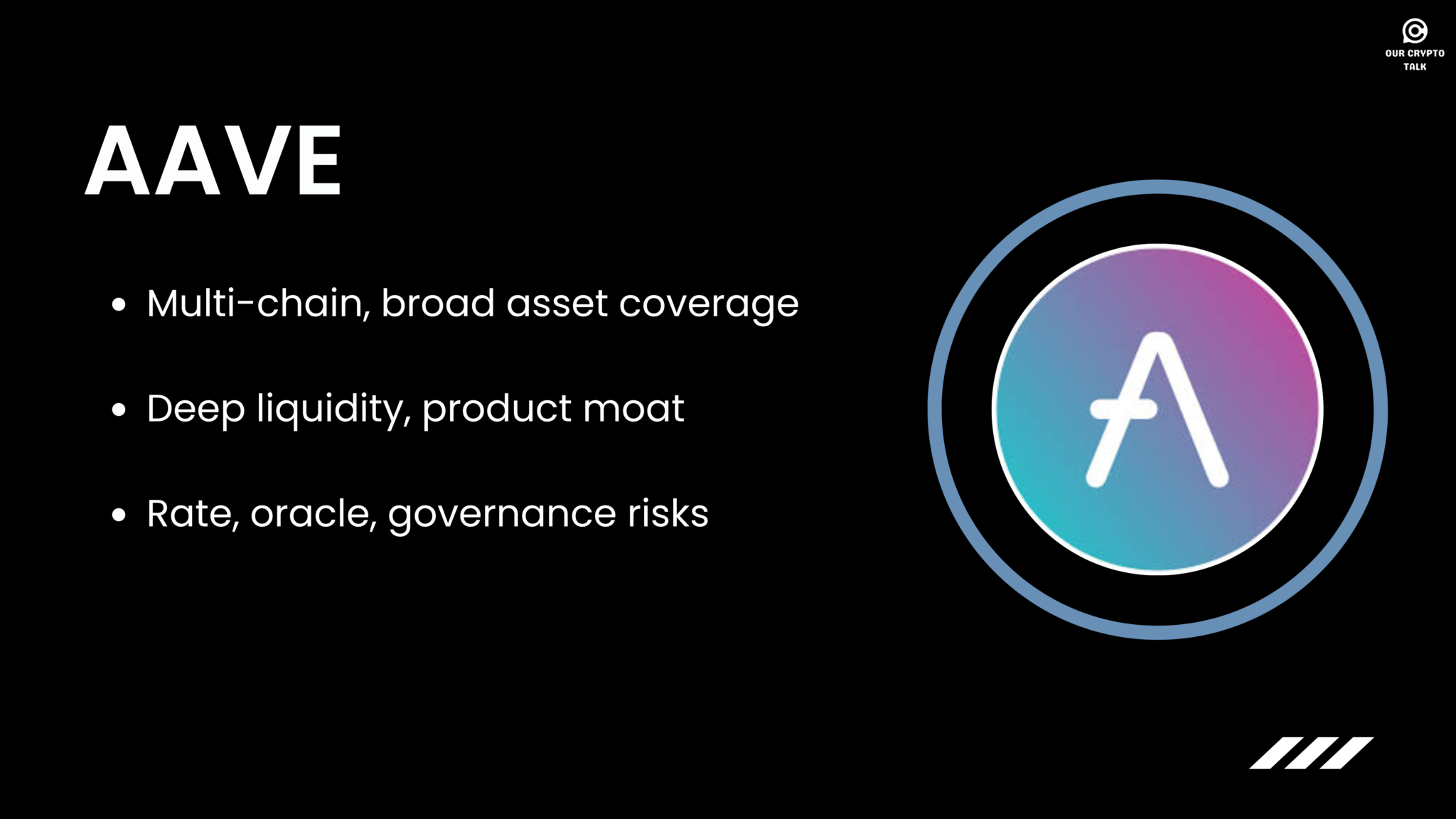
3) ether.fi, non custodial liquid staking (≈ $13B)
What it does: ether.fi offers self-custodial ETH staking where users retain key control through smart-contract mechanisms, issuing liquid staking and restaking receipts usable across DeFi.
Why TVL is high:
- Users who want liquid staking but prefer key ownership over pooled custody.
- Growing integrations in money markets and restaking ecosystems.
Risks to watch:
- Validator set robustness; restaking stack correlation (if used with AVSs).
- Liquidity depth of its liquid tokens across venues.
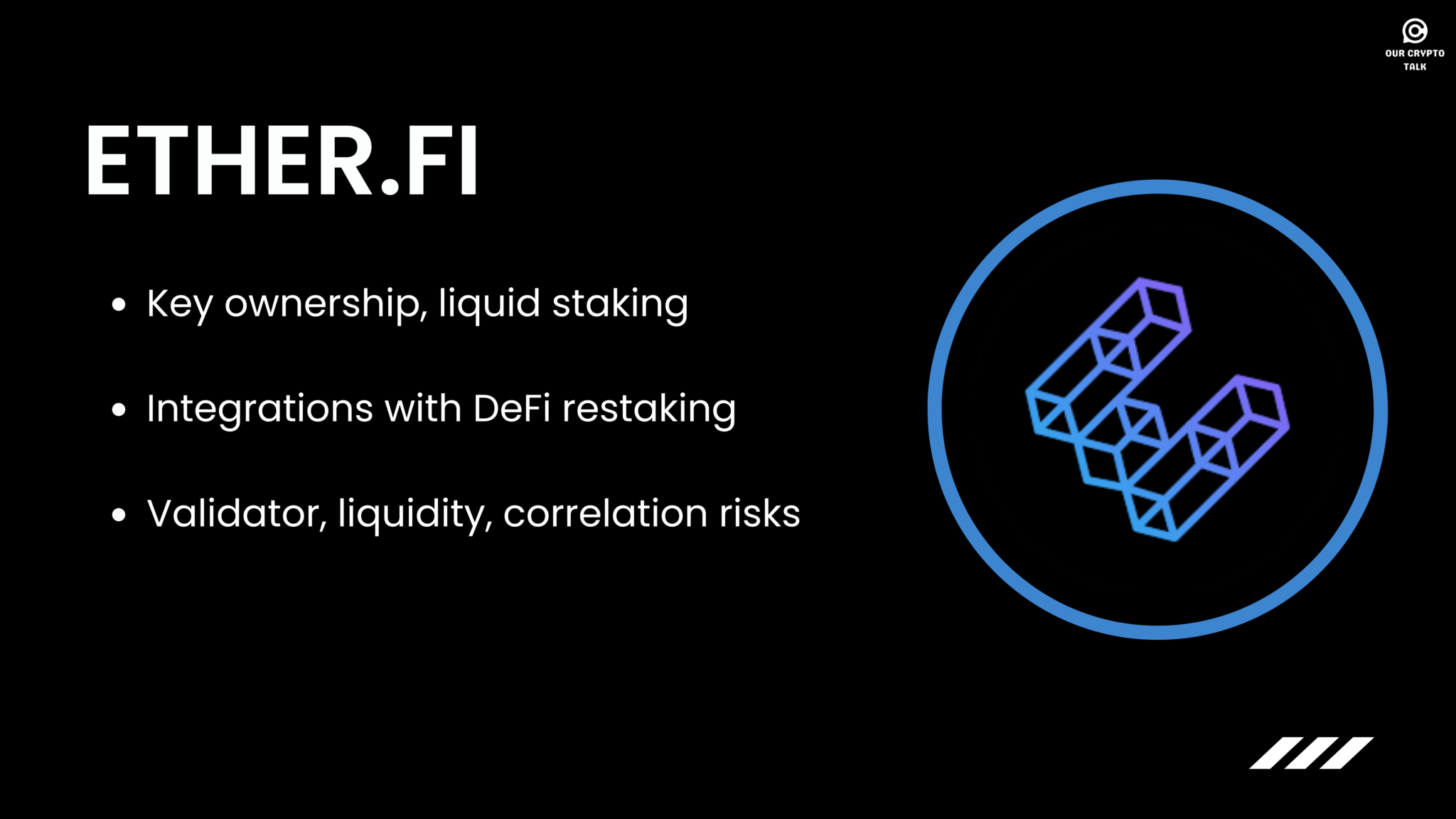
4) Ethena, synthetic yield & stable-value structures (≈ $12.9B)
What it does: Ethena combines delta-hedged positions and yield strategies to produce synthetic dollar exposure and yield-bearing instruments.
Why TVL is high:
- Attractive yields and a “stable value” narrative during sideways markets.
- Integrations with wallets and money markets to deploy its receipts as collateral.
Risks to watch:
- Model risk: derivative hedges can break under extreme volatility or liquidity crunches.
- Counterparty risk at venues used for hedging; complexity of the structure.
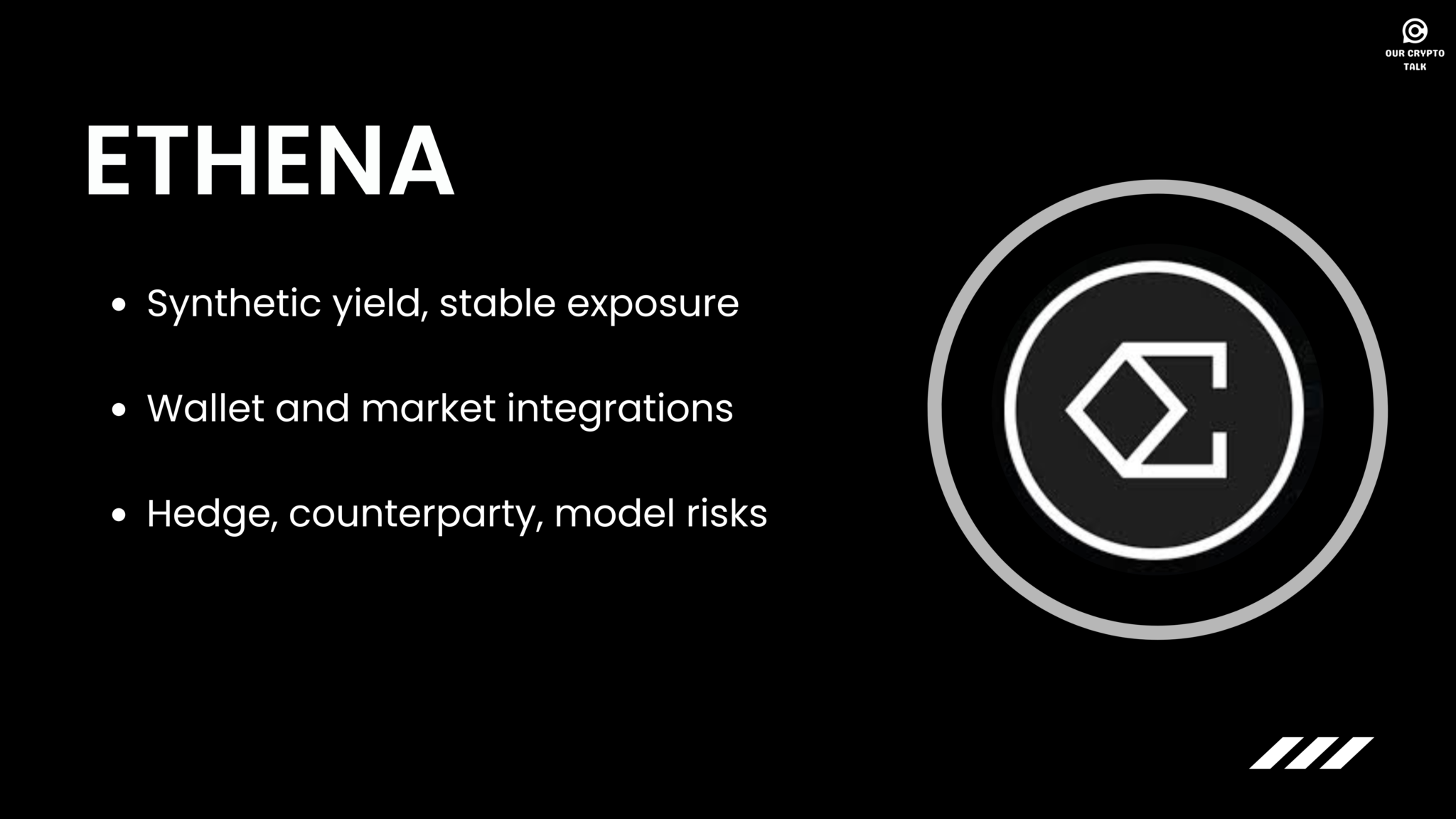
5) EigenLayer, restaking flywheel (≈ $10.5B)
What it does: Restaking lets users reuse staked ETH (or liquid staking tokens) to secure Actively Validated Services (AVSs) for extra yield. Think of it as re-pledging security to new networks with additional rewards.
Why TVL is high:
- Capital efficiency: earn more from the same staked base.
- A new market (AVSs) attracts builders and speculators anticipating future fees.
Risks to watch:
- Slashing correlation: one bad AVS event can harm many restakers.
- LRT proliferation: liquid restaking tokens add layers of complexity and peg risk.
- Regulatory uncertainty around stacked security and reward flows.
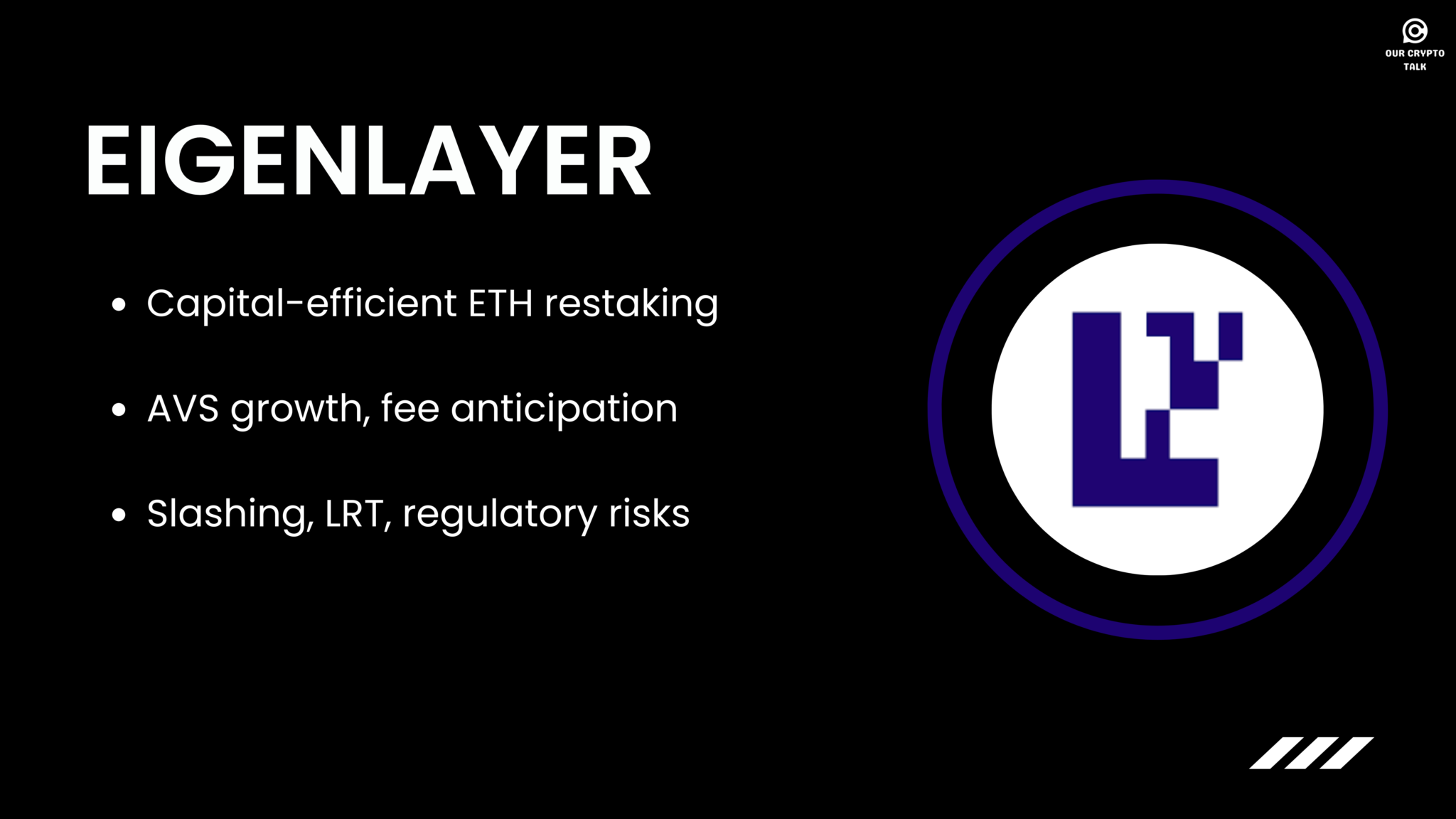
6) Pendle, tradeable future yield (≈ $9.1B)
What it does: Pendle splits yield-bearing assets into Principal Tokens (PT) and Yield Tokens (YT) so users can lock in fixed yields or speculate on future rate changes. A specialized AMM prices time-decaying yield streams.
Why TVL is high:
- Structured-product demand from funds and advanced DeFi users.
- Fits neatly with LSTs/LRTs, turning staking yield into a tradable curve.
Risks to watch:
- Rate volatility and liquidity for longer-dated pools.
- Smart-contract complexity and dependence on upstream collateral receipts.

7) Spark, Maker aligned money markets (≈ $7.6B)
What it does: Spark is a lending market integrated with the DAI ecosystem (and yield-bearing sDAI). Users borrow against blue-chip collateral while tapping Maker-linked liquidity.
Why TVL is high:
- Native DAI loop: sDAI yield and DAI liquidity make borrowing attractive.
- Maker governance alignment and shared infrastructure create trust spillovers.
Risks to watch:
- Over-reliance on DAI liquidity and Maker policy decisions.
- Rate shocks impacting borrow demand and collateral health.
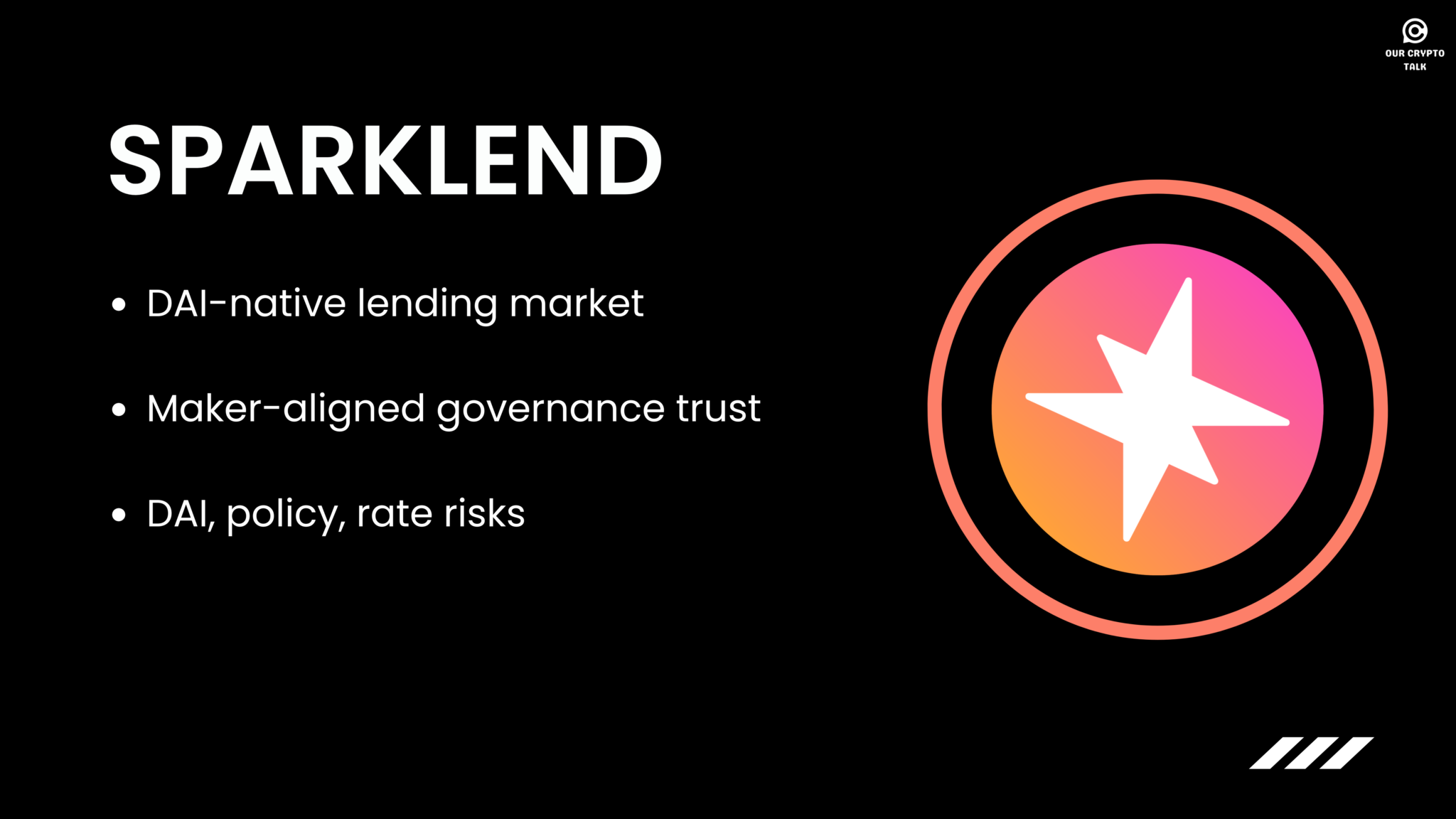
8) Sky, cross-chain liquidity accelerator (≈ $6.6B)
What it does: Sky aggregates and optimizes yields across chains, routing liquidity toward the best opportunities with an emphasis on capital efficiency.
Why TVL is high:
- Aggressive growth incentives and cross-chain strategies.
- Tools that abstract away bridging and compounding for power users.
Risks to watch:
- Smart-contract and bridge risk (multi-chain surface area).
- Strategy complexity can mask drawdowns or path-dependency in returns.
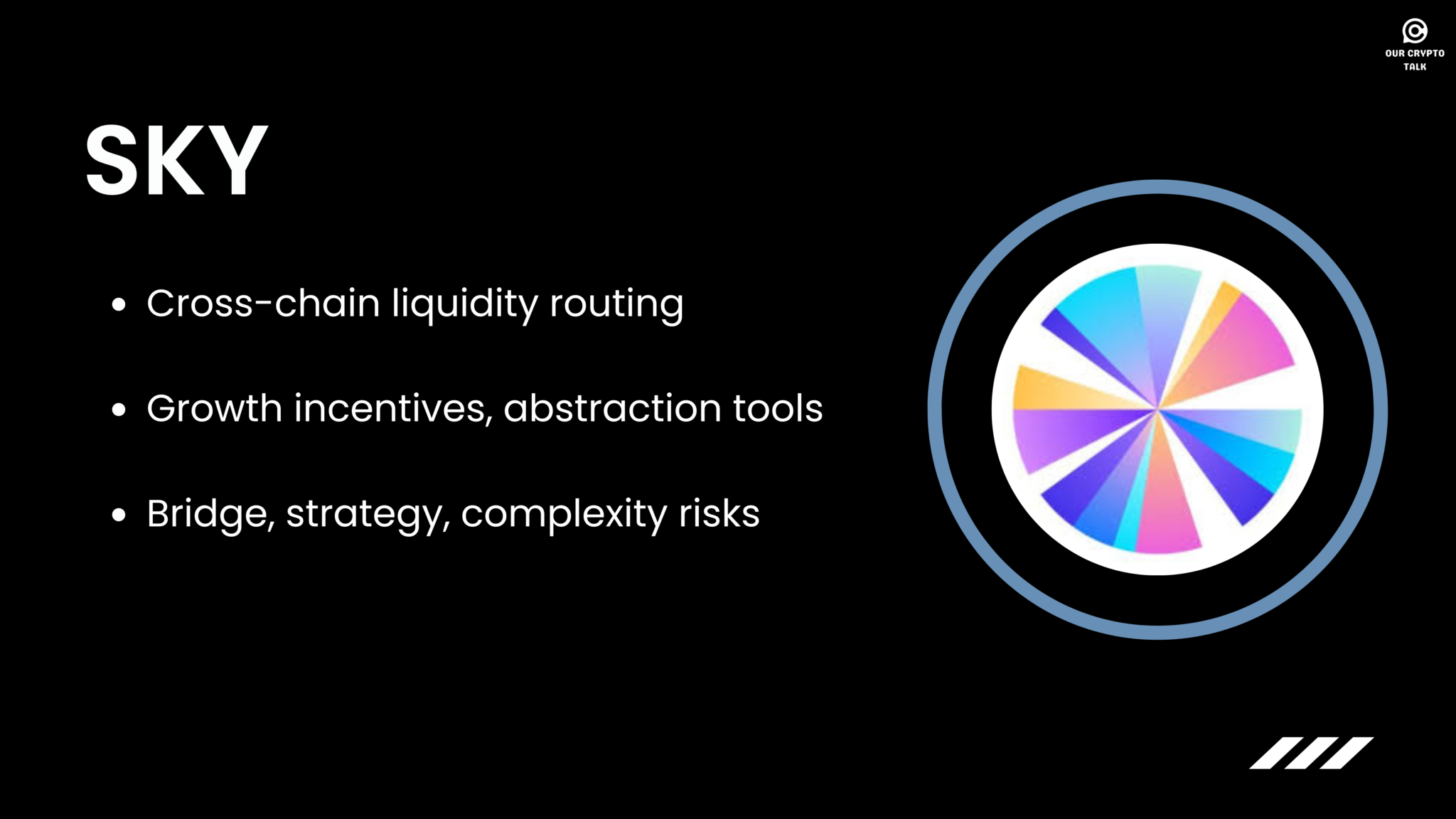
9) Rocket Pool, decentralized ETH staking alternative (≈ $5.57B)
What it does: Rocket Pool is a decentralized Ethereum staking protocol that lowers the barrier for node operators and ETH holders. Users can stake as little as 0.01 ETH and receive rETH, a liquid staking token that accrues staking rewards. For those wanting to run nodes, Rocket Pool allows operation with just 8 ETH plus RPL collateral, compared to 32 ETH for solo staking.
Why TVL is high:
- Accessibility: Lower entry thresholds make it attractive to smaller stakers.
- Decentralization ethos: Emphasis on many small operators helps spread validator power compared to Lido’s larger operator set.
- rETH utility: rETH is widely accepted across DeFi, letting stakers use it as collateral or in yield strategies while earning staking yield.
Risks to watch:
- Collateral dynamics: Node operators must use RPL as insurance; RPL price fluctuations affect operator health.
- Competition with giants: Lido and newer entrants like ether.fi capture more integrations, sometimes overshadowing Rocket Pool.
- Liquidity depth: rETH is less liquid than stETH, which can matter during stress events.
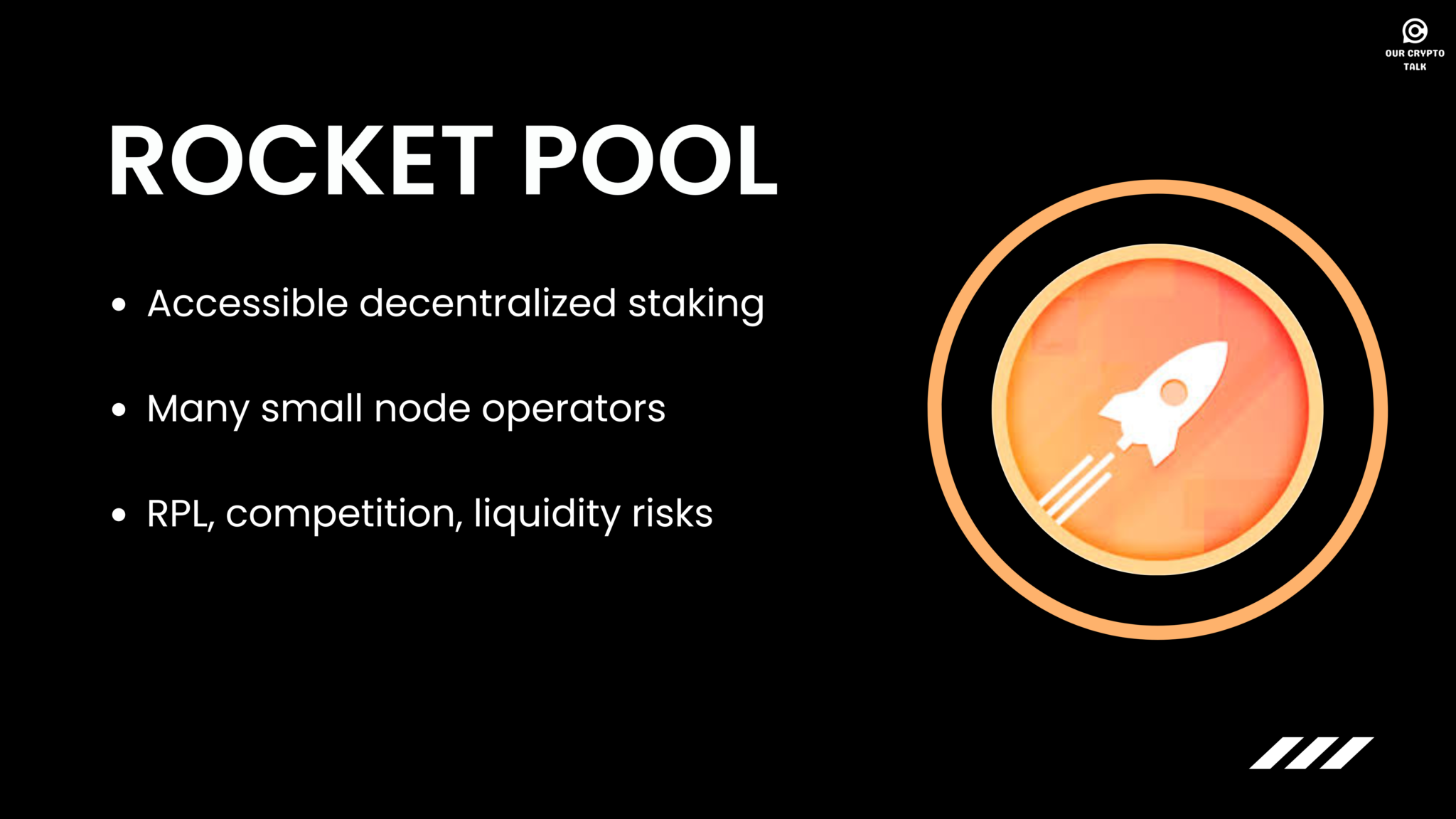
10) Morpho, peer-to-peer lending optimizer (≈ $4.89B)
What it does: Morpho is a next-generation DeFi lending protocol that enhances existing lending markets like Aave and Compound by matching lenders and borrowers directly on a peer-to-peer basis. Instead of everyone passively depositing into a shared pool, Morpho tries to pair counterparties to give both sides better rates while still falling back to the underlying pool for unmatched liquidity.
Why TVL is high:
- Rate improvements: Users can consistently access better borrowing and lending APYs compared to traditional pool-based models.
- Integration with majors: Morpho is built on top of Aave and Compound liquidity, which means it inherits their large user base and liquidity depth.
- Capital efficiency: The matching engine increases protocol efficiency, drawing more institutional players and sophisticated DeFi users.
Risks to watch:
- Smart-contract complexity: The optimizer layer introduces additional smart-contract risk.
- Dependence on underlying pools: Because Morpho relies on Aave and Compound for liquidity fallback, any issues in those protocols could cascade.
- Competition: With protocols like Spark, Fraxlend, and new lending innovations entering the market, Morpho must keep innovating to maintain share.
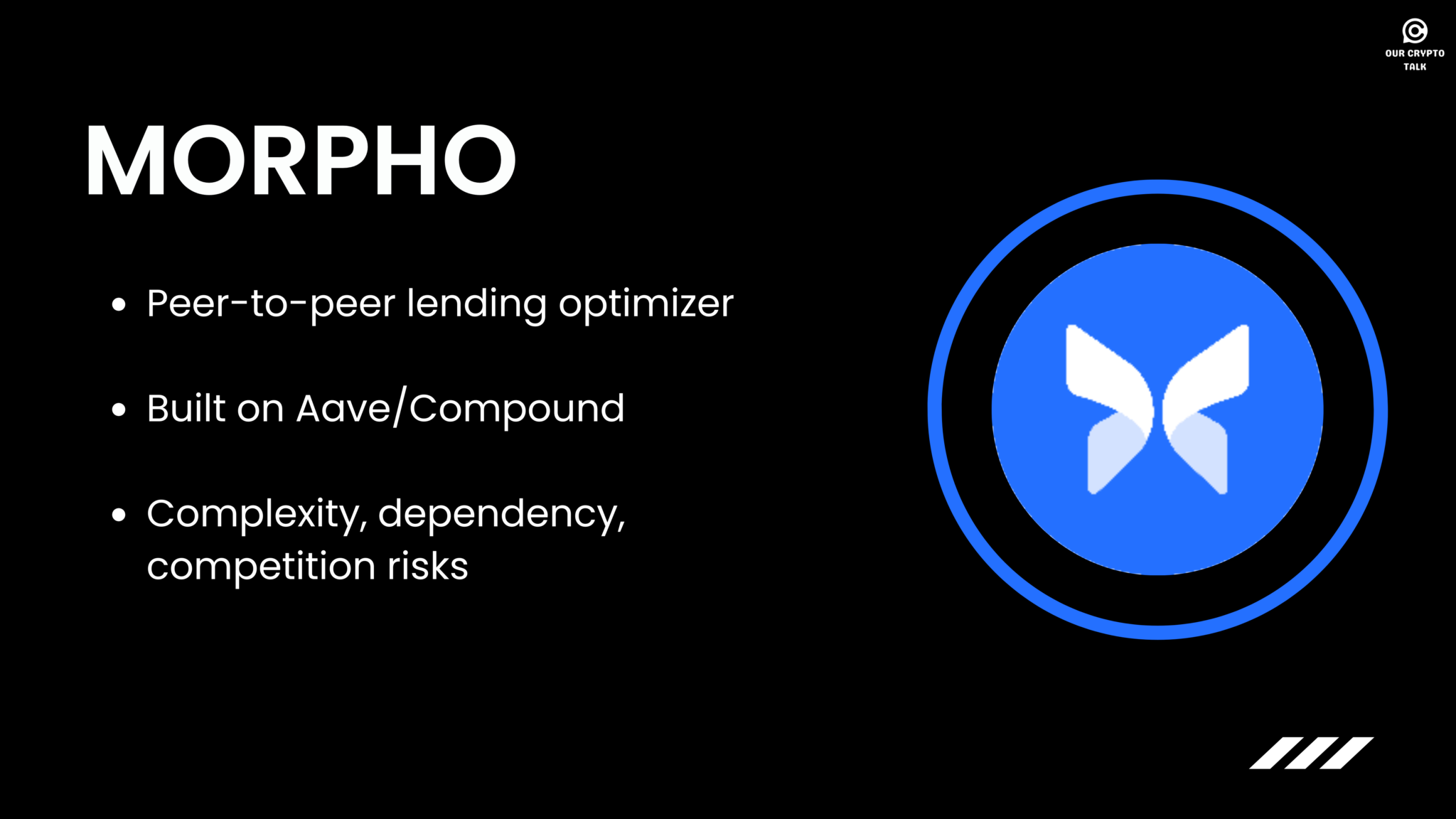
Top DeFi Protocols by TVL Table
| Protocol | Focus | TVL (August 2025) | Why TVL Is High | Risks to Watch |
|---|---|---|---|---|
|
|
Liquid staking for ETH (stETH) | $36.1B | Frictionless staking UX; massive DeFi composability; strong network effects | stETH peg/liquidity under stress; operator concentration; governance tradeoffs |
|
|
Money market (multi-chain lending/borrowing) | $34.7B | Broad asset coverage; integrations & institutional pilots; flash-loan/product moat | Rate/oracle volatility; long-tail collateral risk; governance/cap changes |
|
|
Non-custodial liquid (re)staking | $13.0B | Key ownership model; growing DeFi/restaking integrations | Validator robustness; restaking correlation risk; liquidity depth of receipts |
|
|
Synthetic dollar & yield via hedged strategies | $12.9B | Attractive yields; “stable value” use case; wallet/money-market integrations | Model/hedge breakdown in volatility; venue counterparty risk; structural complexity |
|
|
ETH restaking for AVSs | $10.5B | Capital efficiency on staked ETH; new AVS market draws builders/speculators | Correlated slashing; LRT stack/peg complexity; regulatory uncertainty |
|
|
Tokenized future yield (PT/YT + AMM) | $9.1B | Demand for fixed/variable yield trades; pairs well with LSTs/LRTs | Rate volatility & long-dated liquidity; contract complexity; upstream collateral risk |
|
|
Maker-aligned money market (DAI/sDAI) | $7.6B | Native DAI loop + sDAI yield; trust from Maker alignment | Reliance on DAI policy/liquidity; rate shocks affecting collateral/borrows |
|
|
Cross-chain yield & liquidity routing | $6.6B | Incentives + auto-routing across chains; abstracts bridging/compounding | Bridge/multi-chain risk; strategy complexity & path-dependency |
|
|
Decentralized ETH staking (rETH) | $5.57B | Low entry (0.01 ETH); node ops from 8 ETH + RPL; rETH accepted in DeFi | rETH peg/liquidity in stress; validator economics; protocol governance |
|
|
P2P lending optimizer atop Aave/Compound | $4.89B | Better matched rates; inherits major liquidity; higher capital efficiency | Matching/route complexity; dependency on underlying pools; oracle/rate shocks |
TVL psychology: how sentiment and flows feed each other
- Rising TVL often attracts more TVL (momentum + integrations + media).
- Sharp outflows can trigger a reflexive cycle: liquidity thins, rates move, and confidence dips—driving further withdrawals.
- Big token unlocks, yield changes, or audit events can flip sentiment quickly.
The potential dangers of a high-TVL protocol
- Security honeypot: More value attracts attackers; audits and bug bounties are crucial.
- Systemic entanglement: If the protocol is deeply integrated, an incident can ripple across money markets and DEXs.
- Liquidity mirages: Incentives may concentrate short-term liquidity that disappears when rewards change.
Drawbacks of Using TVL to Compare DeFi Protocols
- Quantity ≠ Quality: $1B in mercenary rewards is weaker than $500M of sticky organic deposits.
- Imported liquidity: Heavy reliance on bridged assets can mask thin native depth.
- Not a revenue proxy: High TVL does not guarantee sustainable fees or token value.
How to use TVL in due diligence (fast checklist)
- Composition: Blue-chip collateral vs long-tail; native vs bridged.
- Distribution: Many independent LPs/validators vs a few whales.
- Usage: Utilization rates, borrow demand, real swap volume, and fee capture.
- Security: Recent audits, bug bounty size, incident history, oracle design.
- Governance: Upgrade process, treasury health, incentive runway.
- Exit routes: On-chain liquidity to unwind positions without major slippage.
Final thoughts
Tracking DeFi protocols by TVL helps you see where capital and confidence are flowing. But to separate signal from noise, pair TVL with composition, security, and real usage. Among DeFi protocols by TVL, Aave and Lido still anchor core money markets and staking, while EigenLayer, Pendle, and others show how fast new primitives can scale.
When people compare DeFi protocols by TVL, they often miss the “quality of deposits” question answering it is where strong theses come from. In practice, portfolios that monitor DeFi protocols by TVL alongside risk controls tend to handle regime shifts better. Ultimately, using DeFi protocols by TVL as your headline metric and layering the checklist above keeps your analysis sharp as the cycle evolves.

